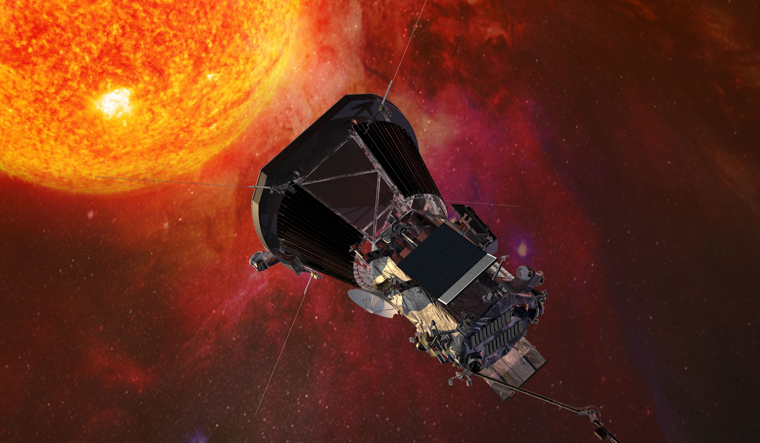US space agency's Parker Solar Probe blasted off on the morning of August 12 from the NASA’s Kennedy Space Center in Florida on its mission to 'touch the Sun'.
NASA's three-stage United Launch Alliance Delta IV Heavy rocket carried the 635 kg-spacecraft which is nearly the size of a small car. The powerful rocket required 55 times more power than its takes to reach the Mars.
The Probe will travel 149.6 million km distance to the sun from the earth at a record speed of around of 690,000 km/h, breaking the record of 265,000 km/h set by NASA's Juno Probe on its journey to Jupiter in July 2016.
Zipping past Venus in just six weeks, the first close encounter with the Sun will take place in November. As it gets closer to the Sun, the Parker will use the gravity of Venus to regulate and slow down its speed in order to reach the best trajectory.
In its seven-year lifetime, the $1.5bn project Parker Solar Probe will get unprecedentedly closer to explore the Sun's mysteries. It will observe the Sun from a distance of 6.16 million km from its surface. The data from the spacecraft will start arriving on earth from December.
During its 24 close flybys of the sun, the spacecraft will “gradually shrink its orbit around the sun” to fly into the sun's corona—outermost part of the star's atmosphere—that extends millions of kilometres into the outer space. Owing to bright light of the Sun's surface, corona consisting of a jacket of gases is invisible without the aid of special equipment. However, it can be seen during a total solar eclipse.
“Eight long years of hard work by countless engineers and scientists is finally paying off,” said Adam Szabo, the mission scientist for Parker Solar Probe at NASA’s Goddard Space Flight Center in Greenbelt, Maryland.
Named after a living person
NASA's historic Parker Solar Probe mission got its name from astrophysicist Dr. Eugene N. Parker who developed the theory on the supersonic 'solar wind' that comes off the Sun as steady stream of particles and magnetic fields. This is the first time that a NASA mission has been named in honor of a living person. “Nothing compares to watching a rocket launch live,” said 91-year-old Eugene Parker who witnessed the launch.
Prof Eugene Parker is currently the Subrahmanyan Chandrasekhar Distinguished Service Professor Emeritus at the University of Chicago. In 1958, when Parker explained his concept of streaming particles from the Sun there were no takers.
Why the Probe won't burn off?
The biggest challenge was to protect the Probe from burning up as it goes closer to corona's extremely high temperatures and radiation. Though the Sun’s outer atmosphere is 10 million times less dense than the Sun’s surface, it's many times hotter than its surface.
An innovative shield made from an advanced carbon-carbon composite is guarding the spacecraft from the hot star. The shield has been tested to withstand up to 1,650 degrees celsius. As the spacecraft moves, the sensors of the spacecraft will direct the 2.3 meters-wide, 11.4 centimeters-thick heat protection shield to face the Sun at all times thereby maintaining a cool temperature of 29 degrees celsius inside.
One million names
The Probe is taking along a lot of good wishes and memories with it. A microchip containing names of more than 1.1 million space enthusiasts who wished to have their names near the Sun, photos of Parker and a copy of his 1958 scientific paper that proposed the solar wind have been sent.


